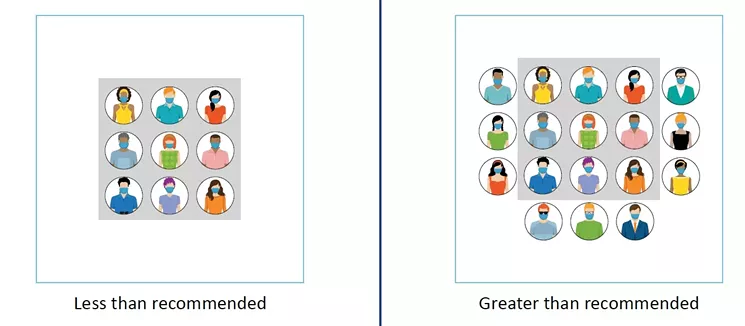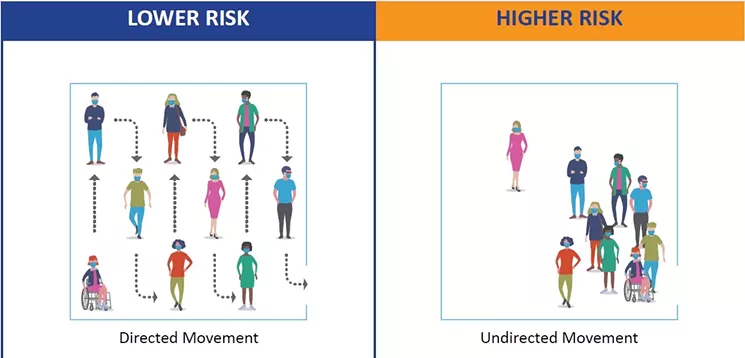The Colorado Department of Education has now waded into this morass with a series of guidelines for reopening schools in the state. The CDE's offerings are recommendations, not mandates, and everything could change depending upon the progress of the disease. But the material provides the most clues to date about what education in Colorado is likely to look like during the final months of this year and the first of the next.
Here's our breakdown, which focuses on the details that parents, students, teachers and administrators most need to know.
State education officials identify five main goals for their guidance:
1. Maximize in-person learning in as safe and healthy way as possible.The Centers for Disease Control and Prevention defines "cohorting" as "the practice of isolating multiple individuals with laboratory-confirmed COVID-19 together or quarantining close contacts of an infected person together as a group due to a limited number of individual cells." But in an educational context, cohorting means dividing up students into small groups that will learn and play together to limit the spread of the infection. Theoretically, only the members of a specific cohort must be quarantined should a member test positive for COVID-19, rather than the entire student body.
2. Ensure a reasonable level of safety for students and staff for in-person learning.
3. Minimize disruptions to education by facilitating timely responses to COVID-19 through cohorting students and staff when possible, screening for symptomatic individuals, and coordinating closely with local and state public health agencies.
4. Ensure equity in educational opportunity by considering learning and health needs of all students, including those with varying health conditions, economic backgrounds, language skills, or educational needs.
5. Encourage flexibility, adaptation, and innovation as schools develop novel approaches to disease control appropriate to local contexts and as scientific knowledge about COVID-19 transmission and control develops.
"Cohorting significantly reduces the number of students and staff who will need to be excluded in the event of a case of COVID-19 in a school by limiting the number of close contacts of each individual (all of whom will need to be quarantined up to fourteen days if they have close contact with a case)," the document maintains. "Considerations about the number of close contacts should be included in decisions about transportation and activities as well."
The CDE's so-called "guidance rationale" is based in part on evidence suggesting "that younger children play a smaller role in onward transmission of COVID-19. The risk of transmission between young children and from young children to adults is lower than the risk of transmission to adults between or from older children and adults. The risk to children is likely lower than that of yearly influenza, accounting for both primary disease and Multisystem Inflammatory Disease in Children (MIS-C). This is why kindergarten and elementary schools should have different guidelines than secondary schools."
Likewise, the passage continues, "T he risk of transmission between children and from children to adults is low, and the risk of transmission to adults is greater from other adults with either symptomatic or asymptomatic infection. Therefore, the most important limit to classroom size for adults is the number of adults required to be in close proximity."
As for reopening protocols, the department recommends differing tactics based on whether the community in which a given school is located has a high, moderate or low incidence of COVID-19. These metrics correspond to the three phases of Colorado's response to the novel coronavirus: Stay at Home, Safer at Home and Protect Our Neighbors.
For high-incidence communities (Stay at Home), the CDE suggests remote learning for all grade levels, with exceptions for "a limited number of students requiring in-person education due to specific learning needs." Under the latter circumstances, up to three adults would rotate in a classroom per day at the kindergarten through fifth-grade levels, with the grownups maintaining a six-foot distance from each other, and up to two adults per day in higher grades.
In contrast, communities with moderate incidence of COVID-19 (Safer at Home) should offer remote instruction "if best for your community," with four teachers allowed to rotate per classroom. K-5 students wouldn't need to meet six-foot distance requirements under these circumstances, allowing for what are described as "normal class sizes." As for older grades, some flexibility might be required in terms of class size and distancing. Meanwhile, the department notes, "Students should remain in their primary classroom with the same cohort of students throughout the week to prevent full school closure if a case is identified. ... Cohorts should have staggered recess periods, and movement to specialized classrooms (e.g. science lab) should be coordinated to avoid mixing of cohorts." Alternating in-person schedules, block scheduling and a hybrid of in-person and proctored remote learning are other ways to make sure cohorts don't engage in too much mixing.
Communities with a low incidence of COVID-19 (Protect Our Neighbors) should be able to maintain normal class sizes, with minimum adjustments. For instance, the CDE points out that "if strict cohorts cannot occur, some cohorting is better than none" — and schools should "be prepared to pivot to full-time remote learning for a class or entire school in case of an outbreak." To that end, the Colorado Department of Public Health and Environment is "currently developing a school surveillance system to help track the number of symptomatic students/staff."
Regardless of a community's phase, certain COVID-19 mitigation tactics are encouraged. Remaining at a distance of six feet or more for under fifteen minutes is considered lower risk, while hanging out for more than fifteen minutes at a closer proximity is seen as higher risk. As a result, six-foot distances between students is preferable, though three feet of distance "still provides substantial benefits and is acceptable in the context of a comprehensive disease control strategy." Adults, however, should stick to six feet, and the department urges the creation of seating charts, so that children will stick to assigned spots throughout the day as much as possible.
Guidance for schools regardless of phase includes the following:
• Use physical barriers as appropriate to decrease risk of viral transmission.For confirmed COVID-19 cases, schools should prepare to shift to remote learning for two to fourteen days for either individual cohorts or entire schools. The CDPHE is expected to complete exposure definitions and outbreak investigation requirements by the end of the month.
• Refer symptomatic employees and students to a health care professional for evaluation and potential testing, as well as to the CDPHE Symptom Support tool. (Additional Guidance), and report to local public health agencies.
• Identify a dedicated room or space to isolate symptomatic individuals until they can return home or to a health facility, cleaning and disinfecting appropriately between use. Locate isolation space apart from health office functions.
• Regularly clean and disinfect all high-touch surfaces and shared objects.
• Maximize ventilation and increase circulation of outdoor air.
• Keep hand sinks stocked with soap and paper towels. Use signage to encourage frequent hand washing.
As for masks, the CDE contends that they should be required of all staffers "unless they cannot medically tolerate a face covering," and they can be temporarily removed by teachers "when learning differences interfere with instruction." Under such circumstances, a face shield can be substituted — but masks should be off "for the shortest duration possible." Adults should undergo "home temperature and symptom screening or self-screening" and remain home if they or a family member is symptomatic. Schools should also "consider daily on-site temperature screenings for employees."
Facial coverings for students are encouraged for kids up to age ten "except during outdoor recess and exercise activities," and required for students ages eleven and older "except during outdoor recess and exercise activities where appropriate distancing can be maintained, unless the student has a health or education reason for not wearing a mask." (Younger students should remove their masks during nap time.) Procedures should also be developed for parents "on temperature checks, home hygiene and attendance/reporting," and students shouldn't come to school at all if they're ill.
Click to read the Colorado Department of Education's school reopening guidelines.














